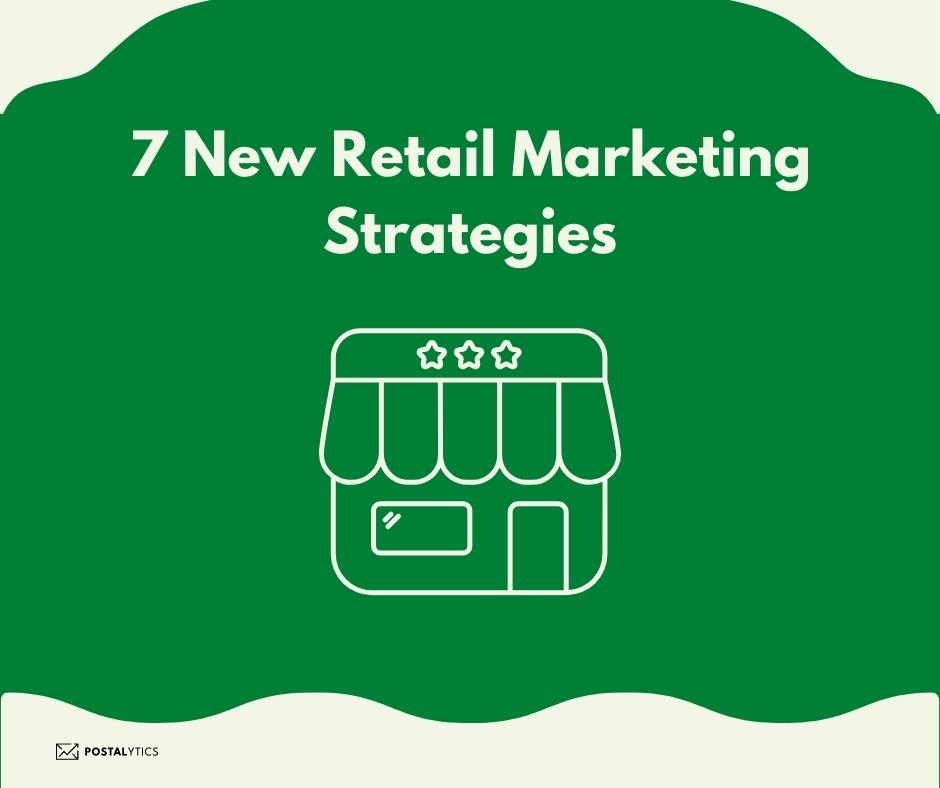
The world of retail marketing is always evolving, and it can be difficult to stay ahead of the curve to attract customers. Familiarizing yourself with the newest retail marketing techniques can arm you with the knowledge you need to retain existing customers, acquire new ones, and enhance your brand positioning.
To better understand Postalytics, you can experience their demo and how they can transform your marketing strategy, leading to greater success.
Table of contents
- Trending Retail Marketing Strategies 2022
- 2. Retargeting Cold Leads
- 3. Events
- 4. QR Codes
- 5. Multi-Channel Campaigns
- 6. Fast Campaigns
- 7. Fully Tracked Campaigns
- Other Types of Retail Marketing
- The Importance of Retail Marketing Strategy
- How To Create a Retail Marketing Strategy
- Most Successful Retail Business Strategies to Date
- Final Thoughts
Trending Retail Marketing Strategies 2022
Below we will discuss seven new retail marketing strategies helping retail businesses retain customers and drive sales.
1. Branding

When people need something, whether it’s a new t-shirt, a phone, or a new coffee maker, they usually have a brand immediately pop in mind.
It may be a company they’ve purchased these items from before, a brand a friend or family member recommended, or maybe a name they remember from receiving letters in the mail.
Visibility is the key to branding, and you need a retail strategy to achieve this.
Many retail businesses, whether they have an online store or have brick and mortar stores turn to Postalytics to drive their marketing communications. In particular, the use of direct mail marketing efforts is enhanced with the Postalytics tool.
Sales promotions and retail campaigns are more effective when sent directly to consumers. Personalizing a message to a targeted audience will increase their likelihood of purchasing.
Brand visibility and awareness are often subconscious in the consumer’s mind, meaning they don’t even realize when they’re becoming more familiar with a brand. This means that when they open a direct mail letter or postcard they have received, the brand will stick in their mind far longer than if it was an email.
Creating a multi-channel campaign where you harness the power of direct mail in tandem with email marketing campaigns and outreach is the most effective strategy.
We call this “Stay Top Of Mind Cadence,” meaning your brand and business are always at the top of consumers’ minds.
For example, if you sell lawnmowers, the customer shouldn’t be able to think of a lawnmower without your brand going through their mind. Such brand recognition is achieved by delivering communications via email marketing and direct mail channels.
2. Retargeting Cold Leads
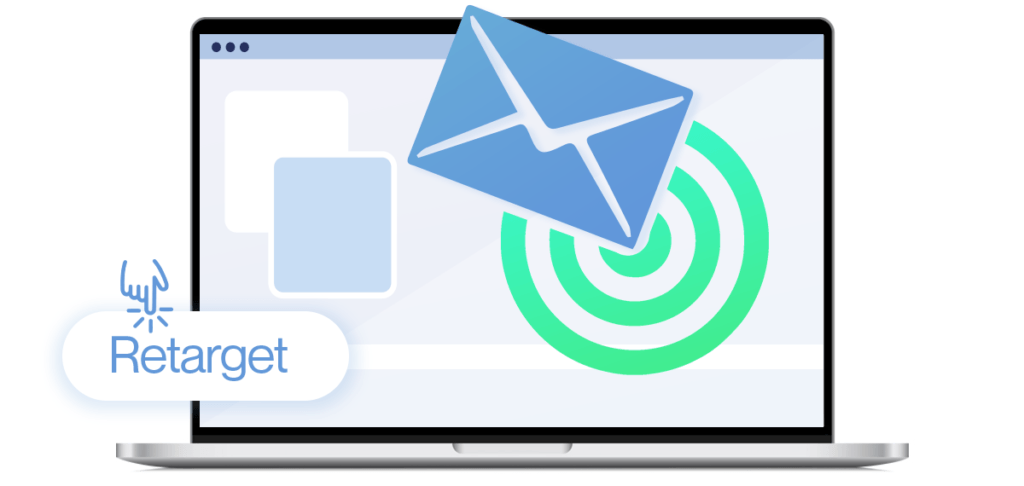
Cold leads can often feel like a failure and be very frustrating. However, many of these cold leads still hold an opportunity for conversion if you can tap into the right pain point or interest.
A cold lead is typically a consumer that showed interest at one point but dropped off, and didnt make a purchase. Often the consumer went to a competitor or decided they no longer needed the product or service.
But if they are dissatisfied with their choice or the need for the product rises again, these cold leads can turn hot if you put your brand first in their mind.
It’s all about being in the right place at the right time to capture your target’s attention so you can be the one to fulfill their consumer needs. With our Postalytics platform, you can tailor communications with cold leads.
Cold leads are often harder to entice, so our system allows you to easily create campaigns featuring special offers, limited offers, and requests for a response. These tactics are more likely to result in engagement and, hopefully, conversion.
The first step is to send direct mail, which typically includes an enticing special. Direct mail is seen as move effective as cold leads often block emails or ignore them when they come in.
Sending a physical piece of mail is an excellent way to recapture their attention to remind them that your brand exists and is ready to help them fulfill their consumer needs.
Postalytics retail marketing plan for cold leads then pivots back to emails, timed to not lose prominence. However, if you bombard consumers with daily emails, they become easily ignored and maybe even flagged for spam. This is where using Postalytics customer segmentation comes into play, allowing you to plan personalized and targeted messaging more likely to yield results.
3. Events
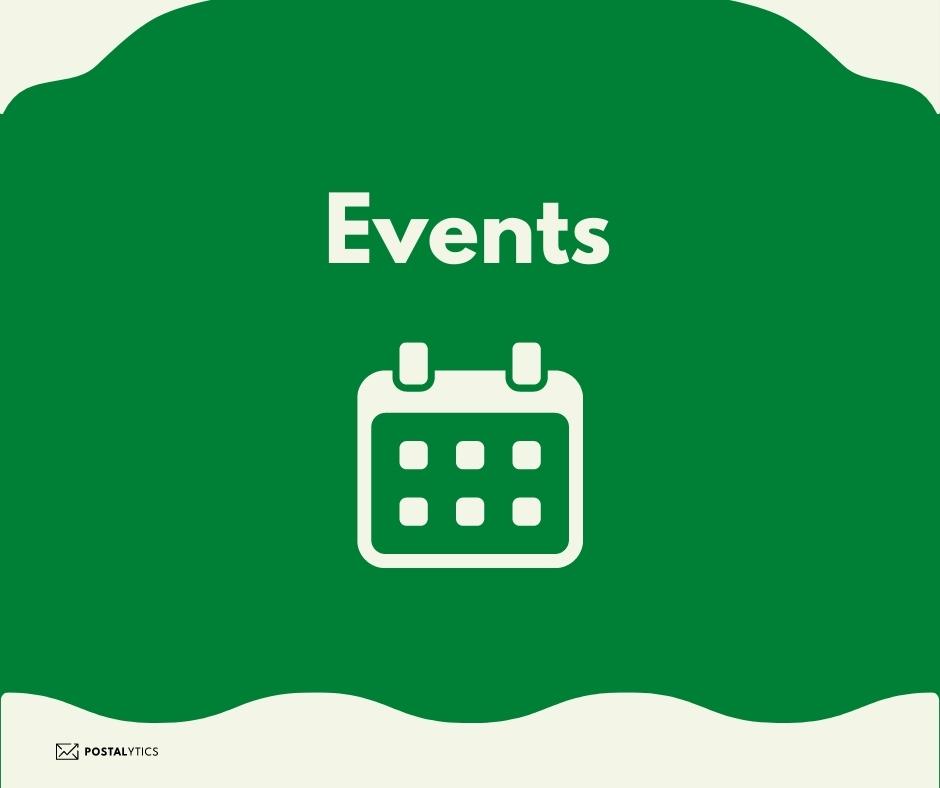
If your business goes to retail industry events, this is a prime opportunity to reach new customers and get them in store. Every attendee should be seen as a potential customer, and you should create a mail campaign to grab their attention before the event.
Utilize the list of registrations and send them a direct mail piece before the event. You can direct them to a landing page where you can capture more information about them and use this in future marketing as well as at the event.
Even if they don’t attend the event, you still have the opportunity to engage them with your brand via direct mail and email campaigns post-event. The goal here is to get every invitee to that landing page so you can acquire their email, locking in their status as potential customers.
Being successful at these events has a lot to do with priming consumers and following up with them. People are often hesitant to engage or convert at these in-person events, so having a direct mail strategy to be in touch before and after the event will ensure you are the first brand that comes to mind when they’re ready to make a purchase.
4. QR Codes
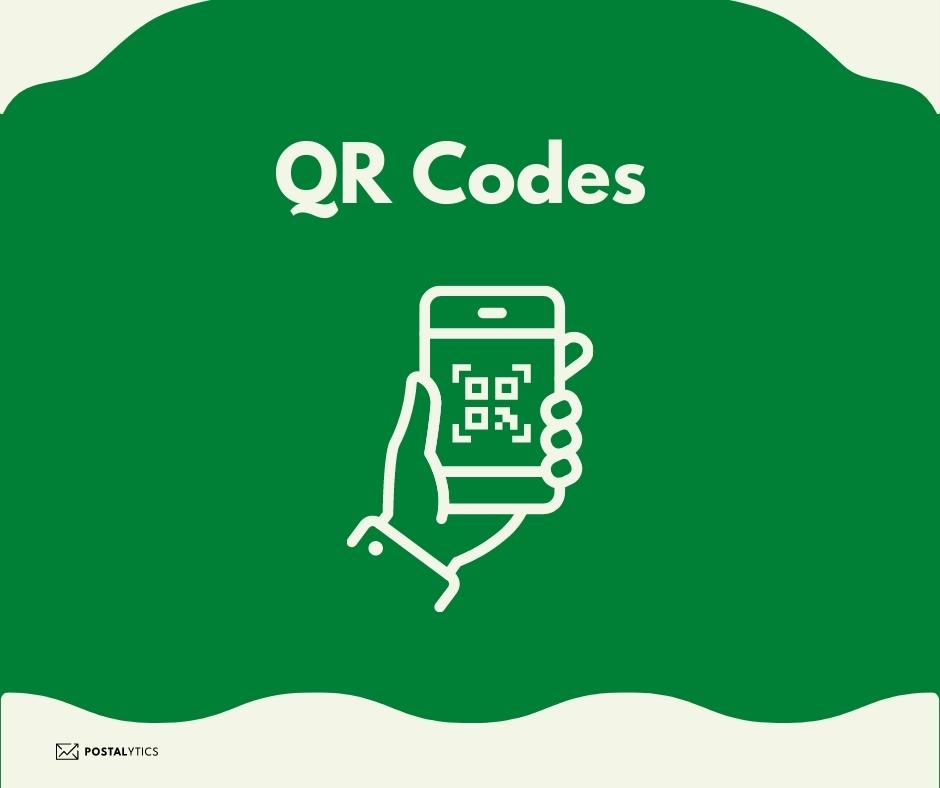
Most of us are now very familiar with QR codes that now allow access to menus at restaurants, information from advertisements, and more. QR codes have become a great way for consumers to interact with brands beyond just reading an advertisement and then moving on.
A giant poster with nothing but a massive QR code can be more enticing and effective than traditional advertising. It fosters curiosity in the consumer, so they scan the code and land on a business’ website or social media platform.
Postalytics recognizes these QR codes’ power to lure consumers to specific sites and landing pages and make it easier for you to include them in your marketing efforts.
Incorporating QR codes into direct mail is an easy way to engage with your customers and drive them to your website, where you can capture their email and other details. QR codes can lead to product information or special offers like loyalty or referral programs to convince customers to convert.
Adding QR codes is practical, quick, and free, as creating and printing these are a breeze. These codes can help you to track the success of your direct mail campaigns because you can capture data with every code scanned. With the help of Postalytics, you can customize QR codes, adding your message, personalized links, images, landing pages, and more. Postalytics offers the best free online QR code generator for direct mail marketing.
With our dashboard, you can easily track and measure the success of your campaigns.
QR codes can result in the following benefits for your business:
- Allows you to capture potential customer contact information and preferences
- Creates new customer segments and stores valuable data
- Offers the ability to track recipients’ interaction with your marketing messages
- Adds dynamic content to direct mail, utilizing video marketing and audio
- Increases response rates from prospects and customers
With the Postlalytics platform making generating QR codes easy, there should be no excuse not to utilize this tool.
5. Multi-Channel Campaigns
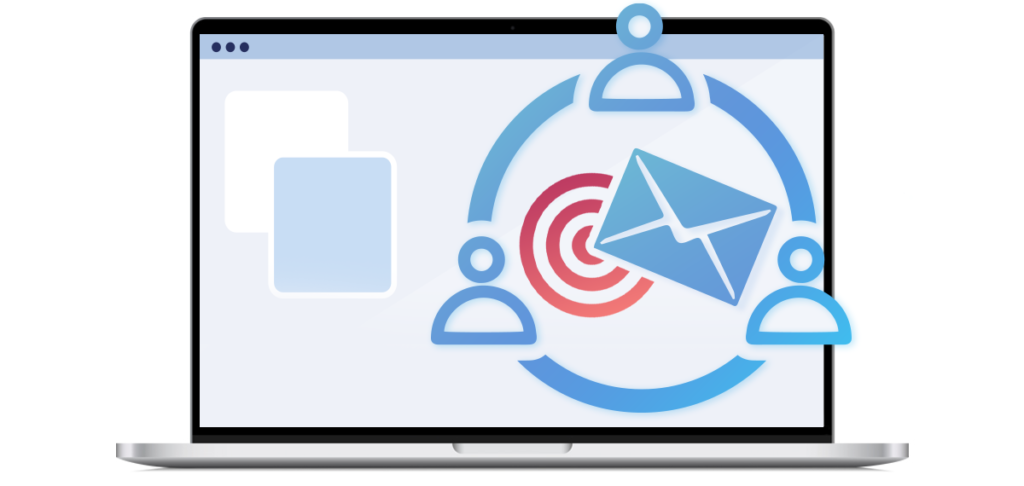
In the retail marketing world today, multi-channel campaigns are the name of the game. Some people spend hours a day on Instagram, while others prefer Facebook. One consumer may open all their direct mail while another spends more time reviewing their emails.
To maximize your consumer outreach, you should utilize various channels. These include social media, direct mail, email, print ads, display ads, and mobile ads. The more channels you use to boost your brand image, the more consumers you will reach, creating a wider base of potential customers.
Then, there are those super active consumers that maintain a presence on all or most of the channels. If a consumer sees your brand on Instagram and then again in their email inbox and then in their physical mailbox a few days later, it imprints your brand in their mind, helping to foster that stay top of mind cadence that you want as a business owner to increase sales.
Postalytics allows you to easily create successful multi-channel campaigns using deep integration with marketing automation. We use customer relationship management (CRM) tools and modern CRM strategies to foster engagement and build trust and familiarity between your brand and your customers. These tools make it easy to develop multi-channel campaigns that reach more consumers and boost brand awareness.
But CRM tools go beyond just sending out a mass of emails and allow you to engage with each customer in a specific manner based on data and past analysis. As a result, these tools can foster a more personalized experience, which will lead to higher conversion rates and customer trust.
Creating campaigns for various channels can be a lot of work and become complex when trying to relay the same message through different means. But with Postalytics, the entire process can be simplified, making multi-channel marketing an easy process that can make a massive impact on your marketing success and customer relationships. It really is a must for any marketing professional!
6. Fast Campaigns
Marketing professionals in the retail industry need to get campaigns to market quickly and effectively. In retail marketing, time is money, and if you wait too long to release a campaign, it can drastically affect sales.
Cloud-based workflow offered by Postalytics cuts campaign time from four to six weeks down to one or two hours. Therefore, a single marketer working from a laptop can execute campaigns by themselves while they work remotely. In a retail setting, this is advantageous.
Best of all, when sending direct mail campaigns, Postalytics will automatically access the best postal rates and printing for you, saving even more time. Various mail options are available, especially if time is of the essence. You can check how long does first class mail take here.
As mentioned, retail marketing is all about brand visibility and being in the right place at the right time. The more campaigns retail marketers can create and launch, the more opportunities your brand will have to drive online sales or get customers into a physical store.
Multi-channel campaigns are essential for any retail marketing plan, but these campaigns can take time to implement. Using Cloud-based software and integrated automation condenses the time and marketing efforts it takes to create and launch one of these campaigns. These tools streamline your marketing strategy, and Postalytics offers all of them in one convenient package.
Why wait almost two months to get the retail client’s name and image out there when you can create an effective campaign in less than a week, sometimes in less than a day. Your marketing team’s tasks will be simplified, helping them do their job more efficiently, and best of all, thanks to Postalytics; you won’t have to sacrifice campaign quality.
7. Fully Tracked Campaigns
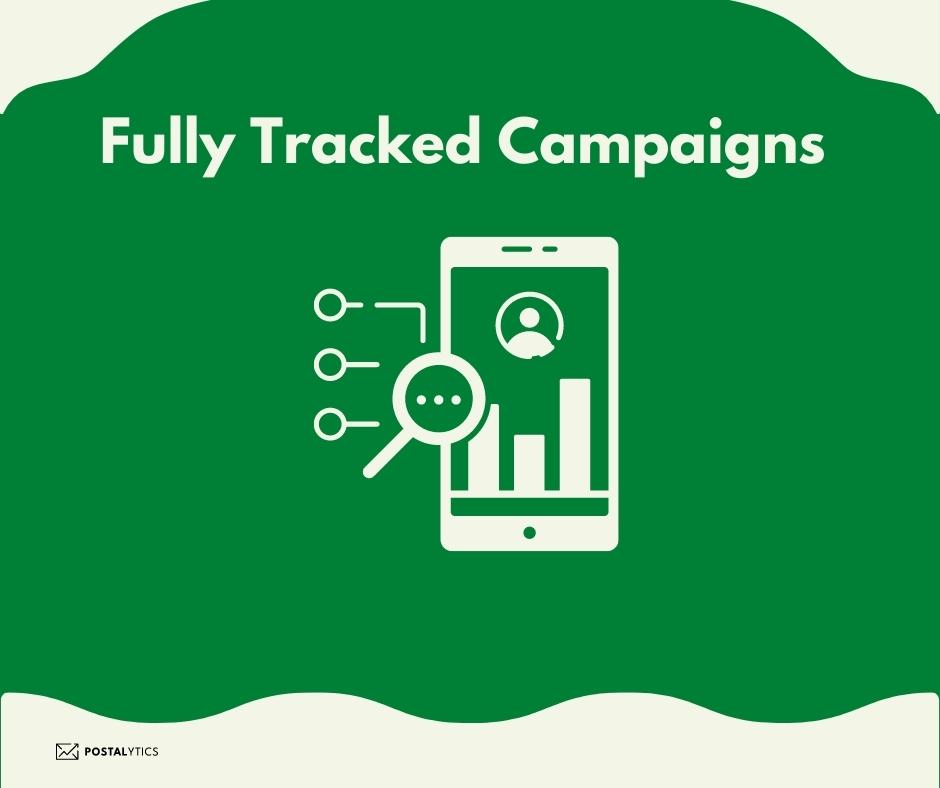
Once you have launched a direct mail, email, or social media campaign, you need to understand the return on investment. One of the most difficult aspects is obtaining accurate data and metrics that offer insight into the effectiveness and help drive future campaigns and strategies. Even if you like a specific campaign and think it works, you won’t know until you see all the available data.
Tracking, managing, and understanding campaign metrics can be confusing and time-consuming. Thankfully when you use Postalytics, these data and metrics are condensed into a digestible report. With our live dashboard, you will be able to track the results of your direct mail campaign in real-time and adjust your strategy accordingly.
Fully-tracked campaigns are necessary to get the most out of your retail marketing. Without data and metrics, you won’t be able to measure the success of your strategy. What worked last year may not work this year. Things in the retail industry are always evolving, and the only way to be sure your marketing strategy stays on the ball is to review the hard customer data and relevant metrics.
Postalytics analytics real-time dashboards give an instant understanding of delivery and response metrics to help you make the right decisions for your marketing strategy. You should never guess the success of a campaign, not when you can have the customer data simplified and presented to you by a reliable source.
Rather than work your way through complicated reports and customer data, you can receive clear delivery and response data right on your main dashboard. It doesn’t get easier than that.
Other Types of Retail Marketing
There are three main types of retail marketing. Below is the breakdown of the various retail marketing types, including store-based, non-store-based, and digital marketing.
Store-Based
Store-based is retail marketing inside retail stores, the actual physical store. It uses in-person promotions and advertising to coax consumers into a store and then pushes them to buy products once they are inside.
Store-based retail marketing is very limited because traditional retailers require the consumer to be within the physical store’s range for these strategies to work.
Store-based retail marketing is great once you get the consumers inside your store, but it is essentially useless if they never venture to your location.
Store-based marketing focuses its efforts on enticing the consumer within a store to make a purchase, but it can’t do much to raise brand awareness or lure customers to the retail store.
Store-based retail marketing consists of the following elements:
- Events
- In-store displays
- Sample products
- Interactive boards
- In-store promotions
Non-Store-Based
Not store-based retail marketing, or offline marketing, includes strategies like print ads, billboards, and other advertisements that are not online or in the retail store. These can be very effective, as people can encounter this type of advertising in various ways and across multiple channels.
Many companies integrate digital retail marketing campaigns into their non-store-based strategies, using QR codes or enticing links in print ads and sending direct mail campaigns.
These are the most common ways people utilize non-store-based retail marketing techniques:
- Direct mail
- Posters
- TV ads
- Press releases
- Word of mouth
Digital Retail Marketing
Lastly, digital marketing strategies are the way many brands push their presence. Nearly everyone has a smartphone and social media accounts, making digital retail marketing an effective way to reach many consumers with the click of a button.
Some of the channels digital media take are:
- Website
- Social media marketing
- SMS marketing
- Email newsletters
While digital retail marketing helps companies reach people, sometimes the message doesn’t get through. Consumers are inundated with emails and online ads all day long and so are less likely to pay attention to them. When you scroll on social media, you can become blind to the ever-present ads. It’s very hard to stand out online when there are so many brands.
We recommend combing the power of digital and non-store-based marketing to drive people to retail stores and generate sales.
The Importance of Retail Marketing Strategy
A retail marketing mix strategy fosters engagement with consumers and potential customers. In addition, combining different marketing strategies across channels boosts your brand’s visibility, resulting in a flow of new customers.
Your brand cannot reach a wide audience without a retail marketing mix strategy that utilizes digital and non-store-based techniques. Without a strategy in place, a retail business will be confined to consumers near their retail store or those who already know about the business if the brand doesn’t have a brick-and-mortar store.
How To Create a Retail Marketing Strategy
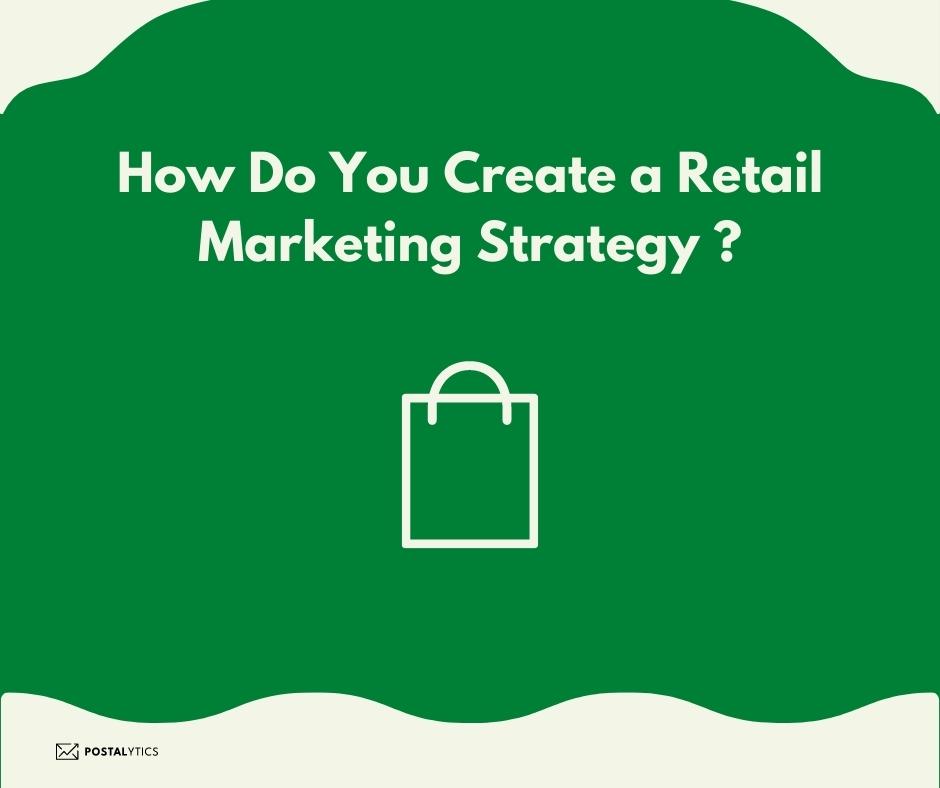
Creating a comprehensive retail marketing campaign, even for an experienced marketer, can be daunting. First, you must know your target customers, their pain points, and how to create consistent and personalized communication with them.
Combining aspects of the three types of marketing strategies and utilizing the power of the Postalytics platform is the best way of achieving success for retail operations.
Doing this on your own can feel impossible, making companies like Postalytics an excellent resource. They give you the tools to communicate with customers and create fast campaigns to boost success.
Most Successful Retail Business Strategies to Date
There are many retailers’ strategies to be considered, but some prove to be more successful than others. Below are the six most successful strategies for most retail businesses.
- Create loyalty programs that invite shoppers to return frequently
- Engage customers in a personalized way via direct mail campaigns
- Understand your customers and create a psychological pricing strategy that appeals to them.
- Curate a distinct and personal brand image
- Frame customer success stories on social media platforms
- Use multi-channel marketing efforts that drive people to your retail settings.
- Pricing strategies and competitive pricing
Final Thoughts
To ensure the right marketing mix across all distribution channels, you should be using Postalytics. It will help you reach your target market, track and analyze campaigns, and make campaign implementation far easier and more effective. All retail marketers should be using the Postalytics tool to drive their retail marketing strategies.
Click here to experience our demo and see how it can transform your marketing strategy, leading to greater success.
About the Author

Dennis Kelly
Dennis Kelly is CEO and co-founder of Postalytics. Dennis joined Boingnet, the predecessor to Postalytics, in 2013. Boingnet was focused on providing print and direct mail marketing service providers the ability to add digital marketing channels to their direct mail campaigns. Postalytics is Dennis’ 6th startup. He has been involved in starting and growing early-stage technology ventures for over 30 years and has held senior management roles at a diverse set of large technology firms including Computer Associates, Palm Inc. and Achieve Healthcare Information Systems.
